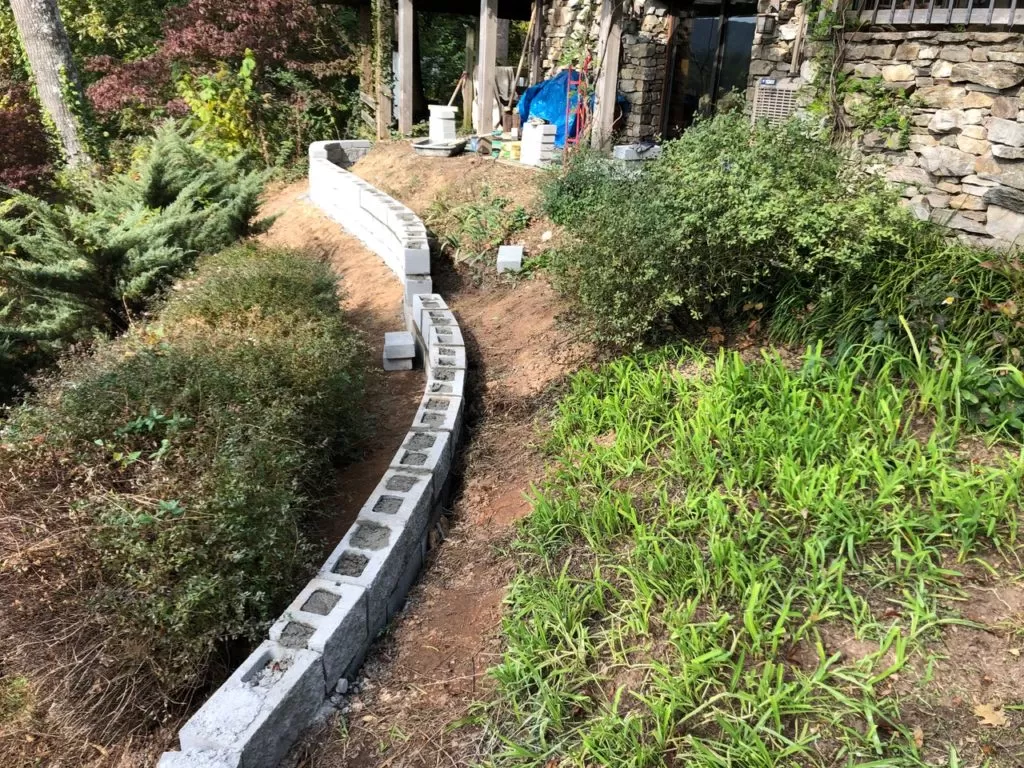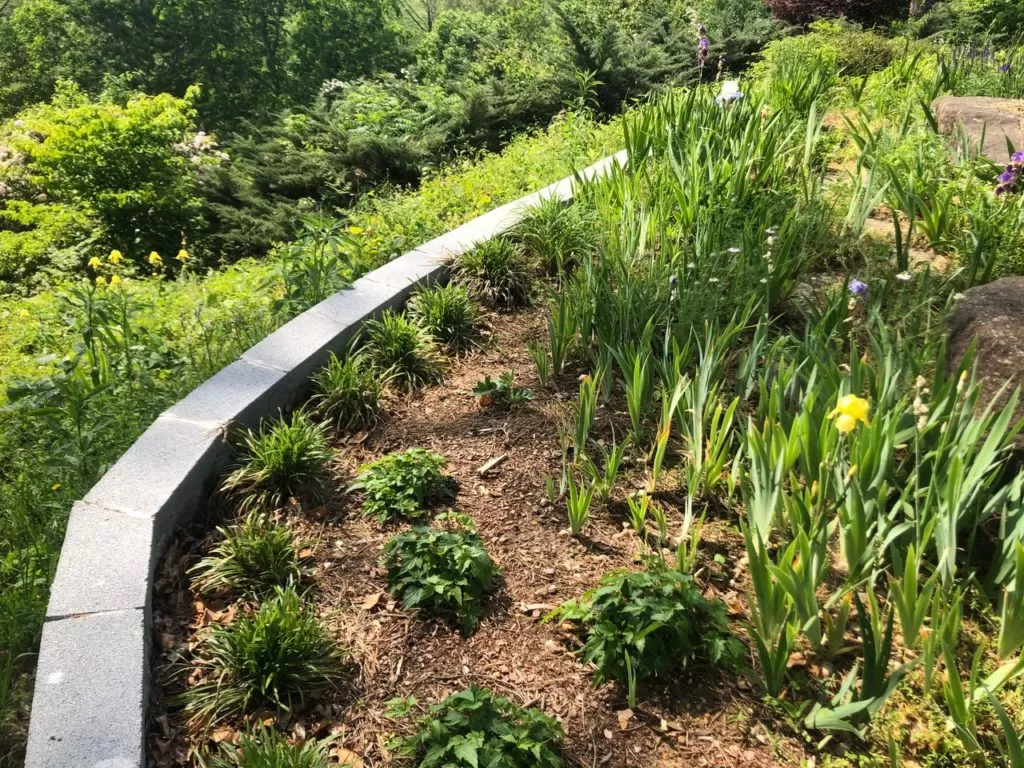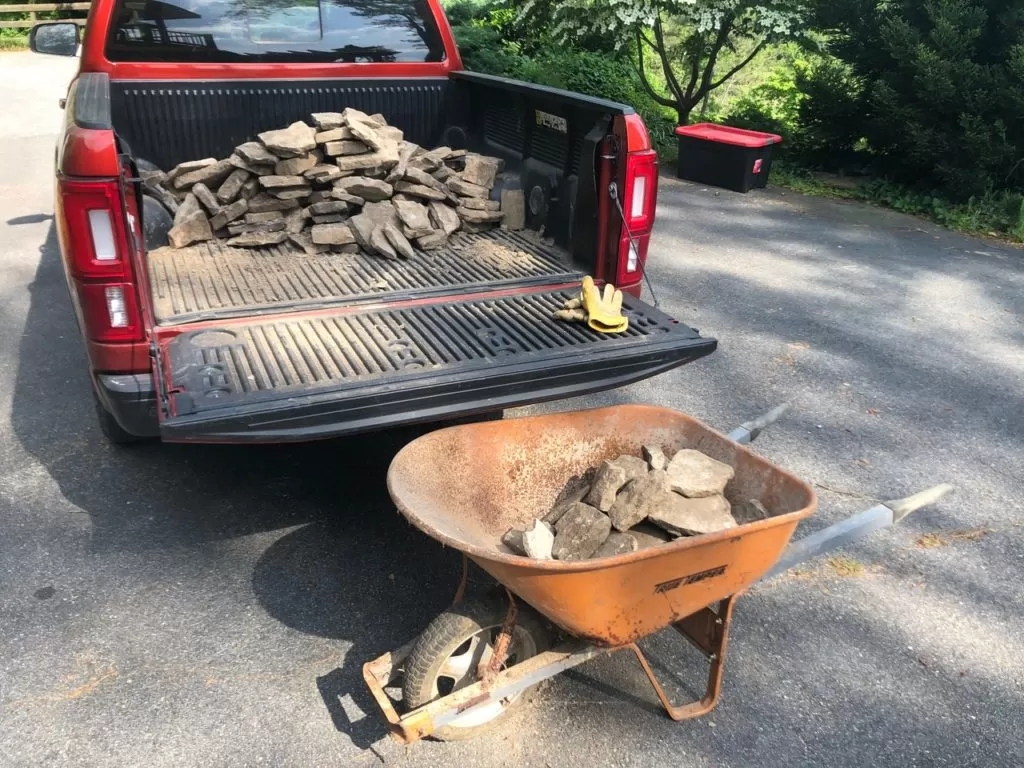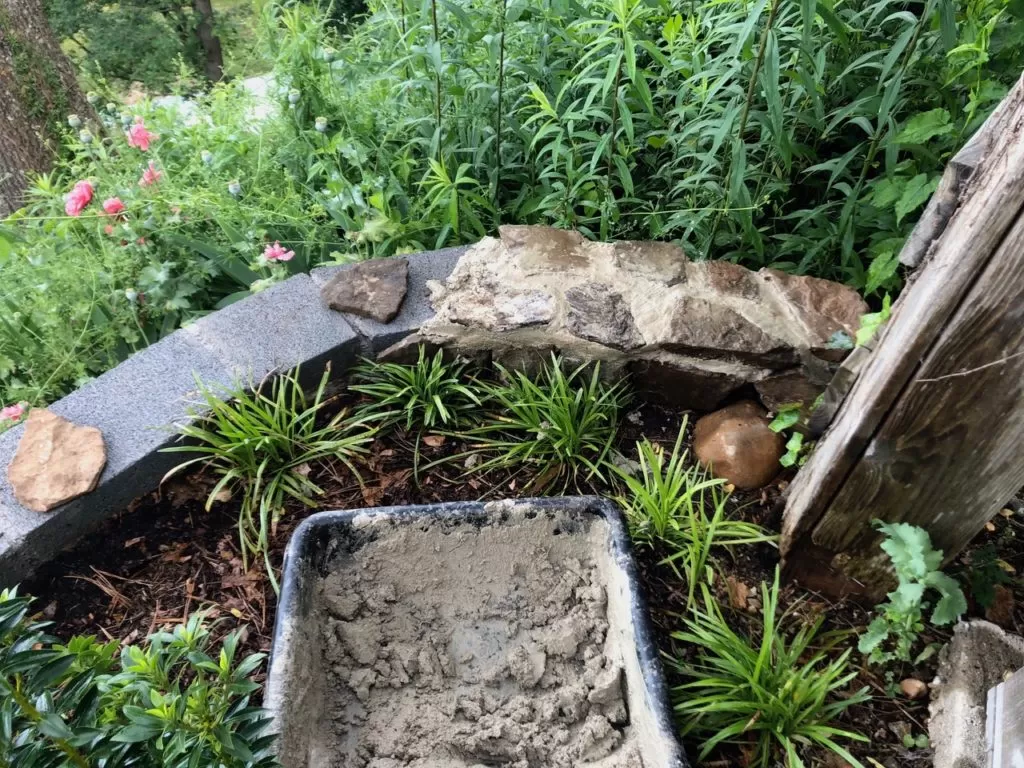Second Endings
Sometimes things just don’t turn out the way we had planned.
At least not the first time.

Last year one of my stay-at-home Covid projects was building a three-foot tall concrete block wall separating Leigh Ann’s west garden from the steep hillside below it. Gravity had gradually been pulling our topsoil and mulch downhill, while the gravity-defying honeysuckle vines had been steadily encroaching upon her flower beds, choking out the stately iris, gladiolus, and Shasta daisies.
I built the block wall to far outlast my tenure here, filling every cell with reinforcing bar and concrete from the poured foundation up to the solid caps. The wall emerged from our most recent winter with nary a crack nor any settling, but I remained unsettled with its appearance. Instead of quickly aging and acquiring a pleasing patina, the concrete blocks and mortar joints seemed to get even whiter in the afternoon sun.

And they certainly did not blend in with her flowers and shrubs.
The solution was simple in theory, but challenging to undertake: cover all of the visible concrete blocks with fieldstone. What made the project challenging was that many of Leigh Ann’s plantings were now blooming, and would not tolerate being stepped on as I mixed mortar, chipped rocks, and wrapped the wall with more natural fieldstone.
What also proved challenging was securing the rocks and mortar I needed. Even though there are six rock yards within five miles of our house, only one still had any one-inch thick Tennessee fieldstone in stock. Ironically, inside their office they had hung an oversized 1913 photograph of the granite fireplace inside the Grove Park Inn as it was being built.
That reminded me of my favorite rock quote from one of the architects vying for the Grove Park Inn commission: “Calculate precisely how many rocks you will need — then double it.”

I left the rock yard last week with what I thought would be enough rocks to cover my wall, but I failed to heed my own advice, so I am headed back in the morning to pick up another half-ton of rocks before someone else does.

Mortar can also be scarce right now, so when I saw the dwindling pile on a solitary pallet at Home Depot, I calculated how many 55-pound bags I would need – then picked up five more. These days the rule for building supplies has become: “Always buy more than you need.”
It’s easier to take back what you don’t need than to wait for the next shipment to arrive.

Until next week,
“The only difference between stumbling blocks and stepping stones is the way you use them.” – Anonymous
Bruce
